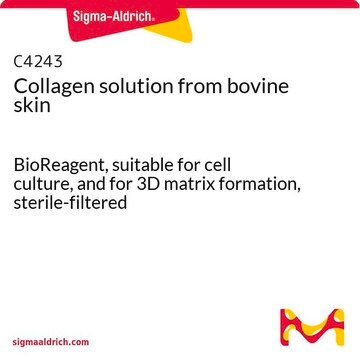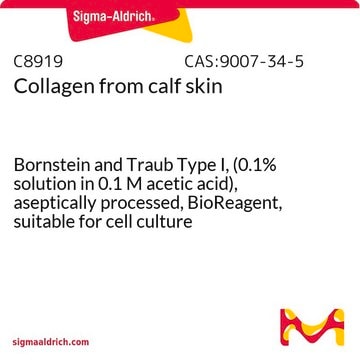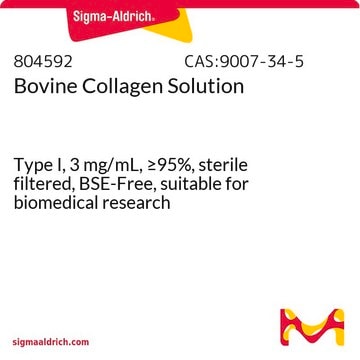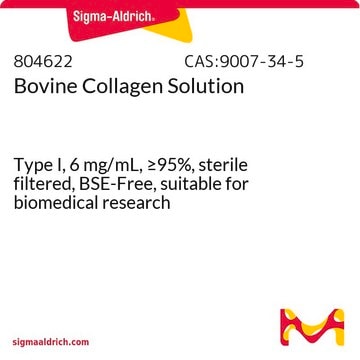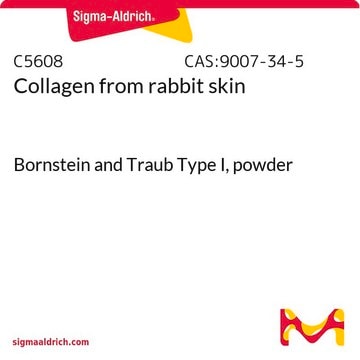C2124
Bovine Collagen Type I
from bovine skin, liquid, 6 mg/mL, suitable for cell culture, used for 3D gel formation
About This Item
Polecane produkty
product name
Collagen solution from bovine skin, Type I, 6 mg/mL, sterile-filtered, BioReagent, and for 3D matrix formation., suitable for cell culture
pochodzenie biologiczne
bovine skin
Poziom jakości
sterylność
sterile-filtered
linia produktu
BioReagent
Postać
liquid
opakowanie
pkg of 50 mL
stężenie
6 mg/mL
metody
cell culture | mammalian: suitable using and for 3D matrix formation.
pokrycie powierzchni
6‑10 μg/cm2
Specyficzność wiązania
Peptide Source: Collagen
Peptide Source: Elastin
Peptide Source: Fibronectin
obecność zanieczyszczeń
endotoxin ≤1.0 μmole/min-mg protein
Warunki transportu
wet ice
temp. przechowywania
2-8°C
Szukasz podobnych produktów? Odwiedź Przewodnik dotyczący porównywania produktów
Powiązane kategorie
Opis ogólny
Zastosowanie
Działania biochem./fizjol.
Komponenty
Uwaga dotycząca przygotowania
Inne uwagi
Kod klasy składowania
10 - Combustible liquids
Klasa zagrożenia wodnego (WGK)
nwg
Temperatura zapłonu (°F)
Not applicable
Temperatura zapłonu (°C)
Not applicable
Certyfikaty analizy (CoA)
Poszukaj Certyfikaty analizy (CoA), wpisując numer partii/serii produktów. Numery serii i partii można znaleźć na etykiecie produktu po słowach „seria” lub „partia”.
Masz już ten produkt?
Dokumenty związane z niedawno zakupionymi produktami zostały zamieszczone w Bibliotece dokumentów.
Klienci oglądali również te produkty
Produkty
Białka macierzy zewnątrzkomórkowej, takie jak laminina, kolagen i fibronektyna, mogą być stosowane jako podłoża do mocowania komórek w hodowli komórkowej.
Extracellular matrix proteins such as laminin, collagen, and fibronectin can be used as cell attachment substrates in cell culture.
Nasz zespół naukowców ma doświadczenie we wszystkich obszarach badań, w tym w naukach przyrodniczych, materiałoznawstwie, syntezie chemicznej, chromatografii, analityce i wielu innych dziedzinach.
Skontaktuj się z zespołem ds. pomocy technicznej